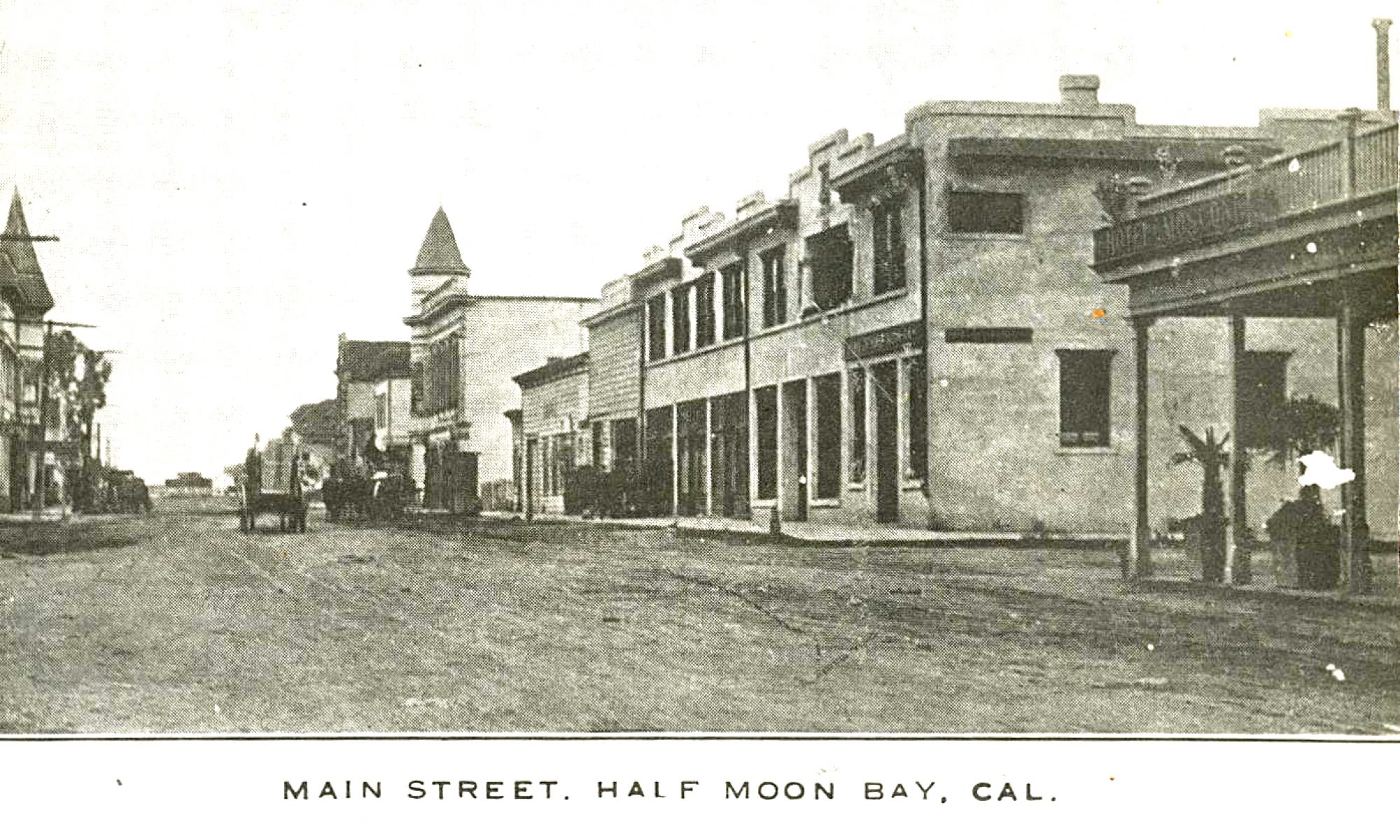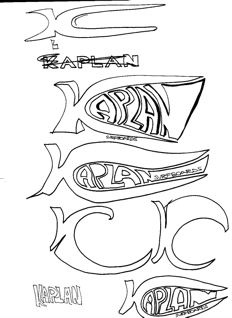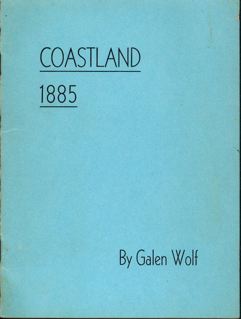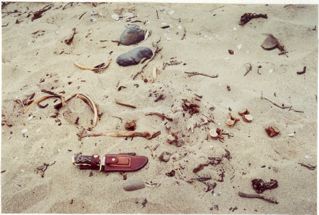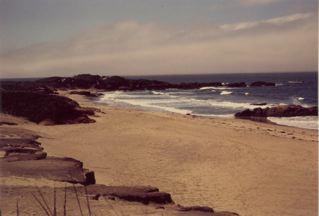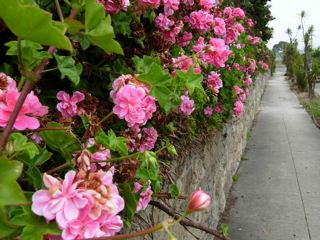“The horses strike up a trot. You feel the ride will be too soon over, a delusion that will fade as the mountains slow the journey to two hours, or three if the road is badly out. Then the passengers must perforce dismount. And walk. Or push. Or pluck pickets from a nearby fence and pry the suddenly stubborn wheels from one deep hole into another.
“The hills part. A gate in the canyon rises on either side. Men are working, clambering, sometimes rope-supported from above. ‘That’s Herman Schussler’s gang preparing for the new concrete dam. It will make a lake of the whole Spring Valley’.
“There is a short stop at Crystal Springs House. Ax men are setting up camps to clear the trees from the lake bed to be. The road soon mounts. The horses walk.
“The hills are green-grey with varied brush. The yellow flowers, the lupines, the primrose, wormwood and mimulus dust the slopes with gold. The sun draws rich odor from aromatic plants and from the yerba buena.
“Suddenly a breath of air comes cool to your face. The scent of the sea is on it. Refreshing and exciting,. You are nearing the top of the grade.
“Now the whole world slopes westward to the sea. Far down a canyon checkered with cultivation the sun picks up the white of houses and of a tall church.
“Bob Rawles has his foot on the brake, the leather hub shuches and squeaks. The horses break into a trot. The coach rocks and rolls.
“Nearly straight below you see the roofs and the golden pumpkin patches of Albrecht.
“Beyond this the canyon opens. ‘That’s where a bear treed old man Digges. He came ahead of the wagons. They had to ground brake them down the hill. No road then. Digges sat in an alder. The bear sat on the bank. Real patient. Till the wagons come. And someone shot him.’
“The road is proving good. It is summer, the stage rolls past the adobe of the Campbells. There the boy Eddie waves, and waits for his day on the driver’s seat to come.
“The next adobe is Fred Fillmore’s. You are nearing town. Here is the Catholic cemetery. Here is Gilchrist’s creamery. Ahead is the piled bridge that spans the Pilarcitos.
“On the right, the long, low adobe of the Vasquez family. Daturas bloom against its walls, and marguerites, yellow and white, crowd the yard.
“a horseman is quietly riding out on a golden pony. Only his white beard tells you he is not a youth. He is instead a centaur. He is Pablo Vaquez. Legend had many tales of him. Did he ride with Murieta? Who knows….
….To be continued…
Photo-courtesy San Mateo County History Museum. Visit the museum at the historic Redwood City Courthouse–or better, yet, become a member!
